HVAC Training Shop is reader-supported. As an Amazon Associate, I earn from qualifying purchases.
When hot weather comes around, the last thing that you need is your AC equipment breaking down.
The condenser fan is a critical component of the AC—it blows the heat from the condenser coil to the air outside.
So what do you do when the condenser fan in your AC stops running?
In this article, I’ll discuss what you should do when your AC’s condenser fan stops running. I’ll also go over everything that you need to check in your AC condenser—step-by-step.
Check the air handler unit
Checking your air handler unit should be the first thing that you do if your AC’s condenser fan isn’t running.
Why is that?
Most AC air handlers and furnaces have a small flashing light on them. This indicator light is connected to the unit’s control board.
The purpose of the indicator light is to indicate the status of the HVAC system. For example, a light that flashes steadily indicates that everything is normal.
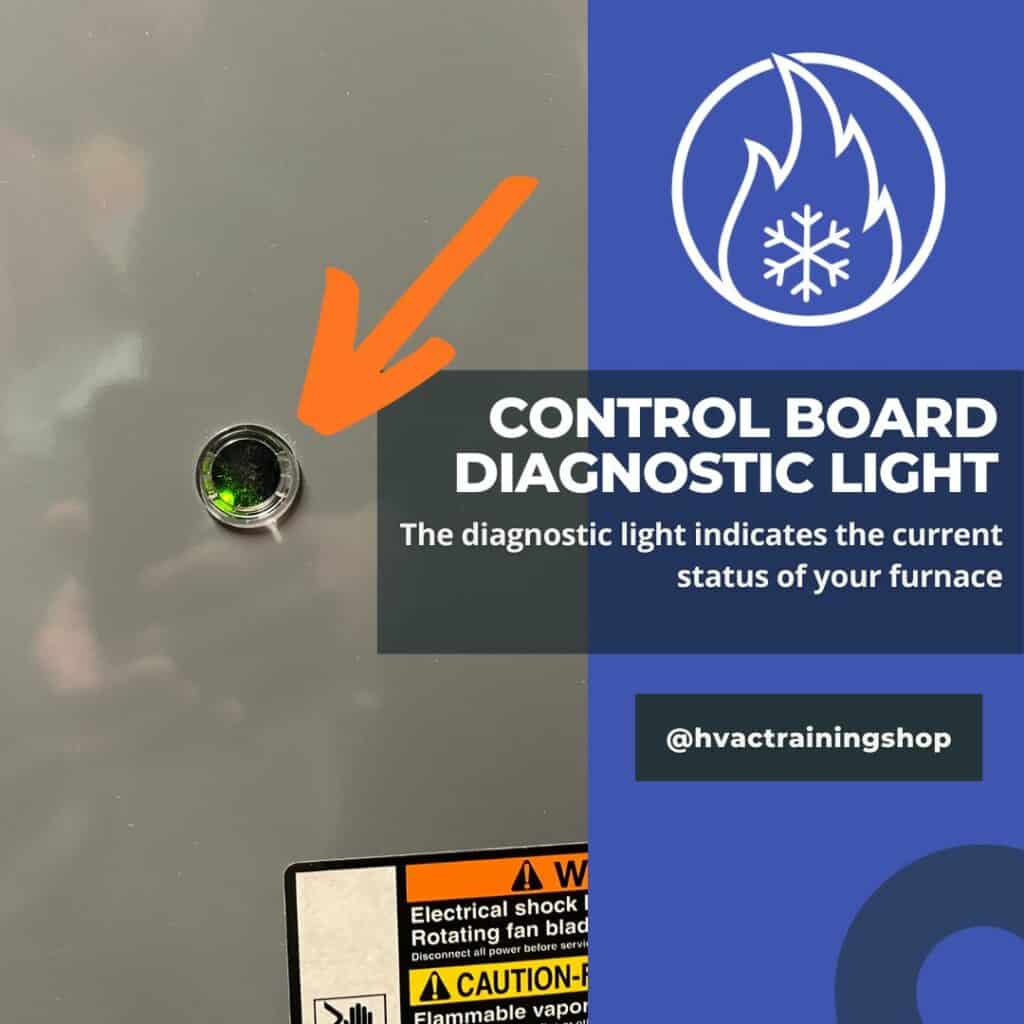
If your air handler’s indicator light is flashing in some sort of pattern, then it’s telling you that something is not working correctly.
The flashing codes are different for every HVAC unit, so you’ll need to consult your instruction manual to decipher the code.
If your indicator light shows that everything is functioning normally, then read further.
Check for power to the condenser unit
The next thing that you should do is check for power at the condenser unit.
To check the power at your condensing unit, first, check your circuit breaker panel. Check for tripped breakers.
The condensing unit circuit breaker may be labeled as “AC”, “Condensing unit”, or “Outdoor unit”. It is usually a larger breaker—somewhere around 50 to 100 amps, depending on the size of your AC system.
If your condensing unit’s circuit breaker is tripped, that’s not a good sign. There’s usually a reason that it tripped—a malfunction.
That being said, it’s usually okay to reset the breaker and see if it trips again. Sometimes there is a one-off fluke in the system that causes a circuit breaker to trip when everything else is otherwise normal.
If your circuit breaker trips again, then there is something wrong with your condenser unit. It may be the AC condenser’s compressor or fan. Read further to diagnose the issue.
Check the fan capacitor
A bad fan capacitor will cause an AC’s condenser fan to not run.
Coincidentally, a bad fan start or run capacitor will also cause a circuit breaker to trip.
So how do you know if your condensing unit’s fan capacitor is bad? Follow these steps to check:
Shut off power to the condensing unit
Turn off the power to the condensing unit at the circuit breaker and disconnect.
The circuit breaker is in the breaker panel inside your home.
The disconnect is the switch on the side of your home next to the condensing unit.
Confirm that power is off by using a voltage detector.
Remove the service panel on the condensing unit
The service panel is the panel on the side of the condensing unit. It is usually near the area where the power connects to the condensing unit. The service panel may have some labels or stickers on it.
Find the fan capacitor
After the service panel is removed, find the capacitor.
Most AC condensing units use a dual run capacitor. The dual run capacitor is a 2-in-1 capacitor that connects to the condenser fan and compressor.
Most dual run capacitors are cylindrically shaped, like a large battery. There will also be a few wires connected to the top of the capacitor.
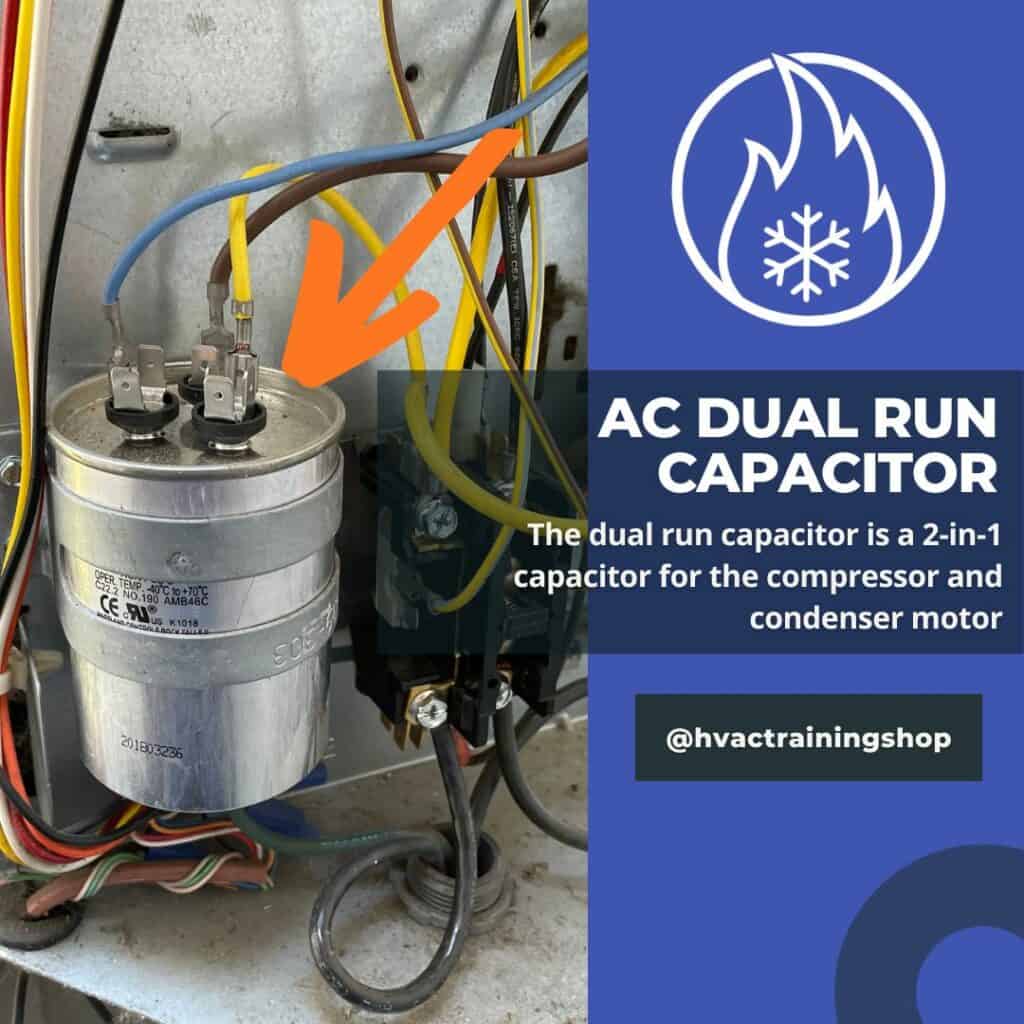
Some condensing units may have two capacitors: One for the fan and one for the compressor. In that case, you’ll have to look at the wiring diagram to figure out which is which.
You can also check the capacitors’ farad ratings. The capacitor with the lower farad (uF) rating will be the fan capacitor. The fan capacitor may also be labeled.
Inspect the fan capacitor
Once you find the fan capacitor, take a look at it.
- Is it swollen at the top? That’s a surefire way of knowing that a capacitor is bad.
- Is there fluid leaking out of the capacitor? That also means it’s bad.
- Is there rust on the bottom of the capacitor? That could also mean that it’s bad.
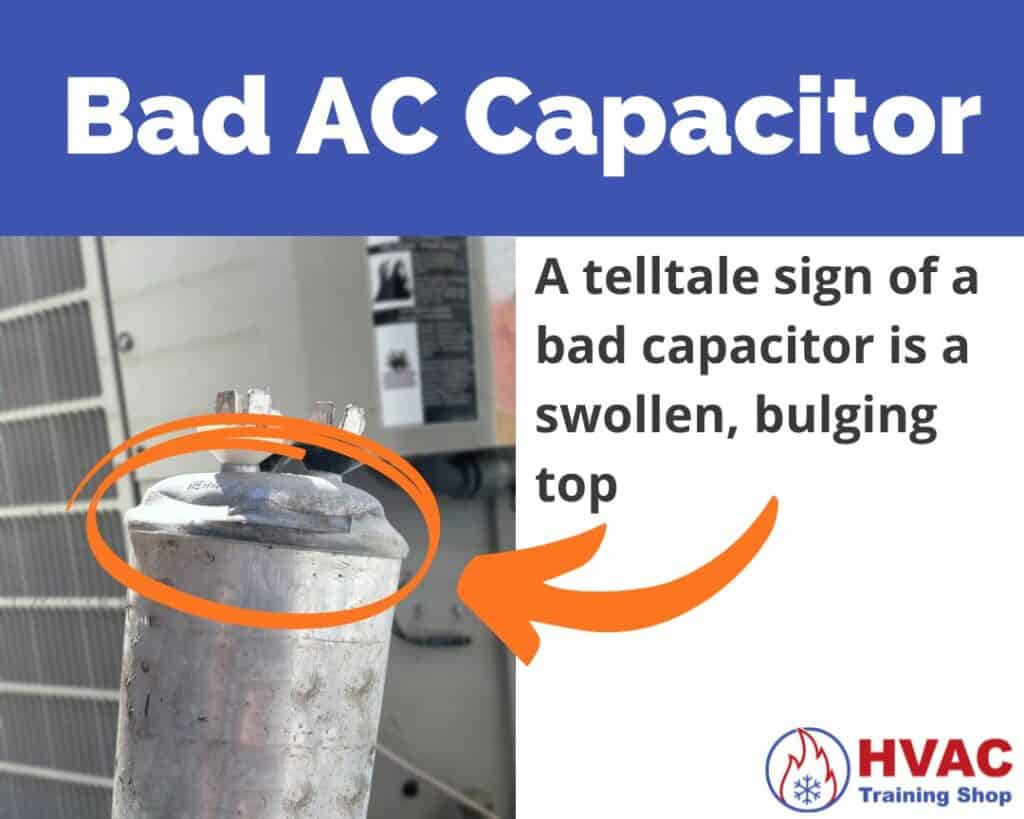
If your condensing unit’s fan capacitor is bad, then it needs to be replaced.
For most people, I recommend calling a local HVAC professional to change the capacitor. Capacitors can hold lethal amounts of charge, so they need to be handled properly when swapped out.
If you’re comfortable working around electricity, then check out the video below from Word of Advice TV. Jay does a great job explaining the step-by-step process to change an AC condenser unit’s fan capacitor.
Check the motor overload reset switch
Some AC condensing unit fan motors have built-in thermal overload protection.
What’s thermal overload protection used for?
Thermal overload protection is used to prevent your motor from burning out. When an electric motor has an issue, it usually will overheat.
When the fan motor overheats, the thermal overload switch will trip. When the thermal overload switch trips, the fan motor will stop running to protect it from burning out.
Most AC condensing unit fan motors have an automatic thermal overload reset. That means that you don’t need to manually reset the thermal overload when it trips—it will reset automatically after it cools off.
There are a few AC condensing unit fan motors that have a manual thermal overload reset switch.
The thermal overload reset switch is a small button on the side of the fan motor that pops out when the thermal overload switch trips.
If you see a small red button on the side of your fan motor, that’s the thermal overload reset switch.
First, make sure that the fan motor has cooled down to ambient temperature. Next, press the thermal overload reset button.
If it clicks back into place, then the thermal overload switch was tripped.
If the button doesn’t click back into place then the motor is still too hot, or there is another failure somewhere inside the fan motor.
The next task is figuring out why the thermal overload tripped in the first place.
It could be due to one of the following issues:
- Bad voltage to condensing unit
- Incorrect motor wiring
- Motor needs lubrication
- Motor windings are damaged
- Ambient temperature is too high
In any case, it’s better to get your local HVAC professional to take a look at your condensing unit if the fan motor’s thermal overload keeps tripping.
Check the fan contactor
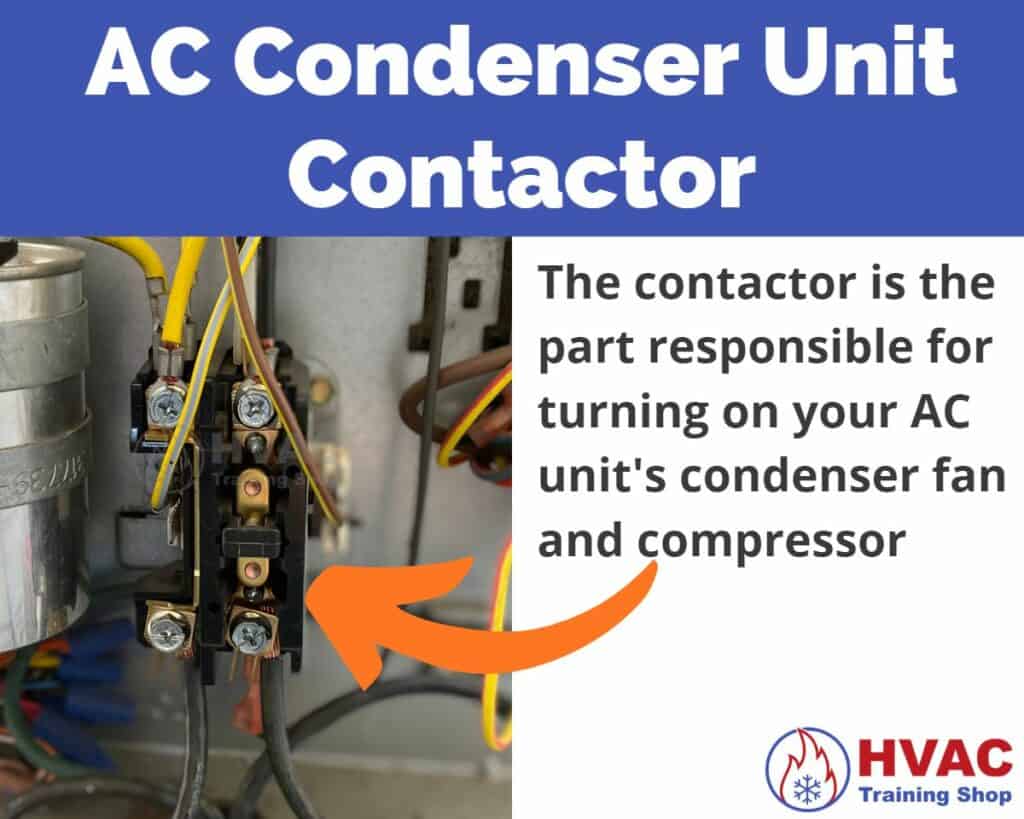
The fan contactor is the “switch” that turns the condenser fan on and off. If the fan contactor is broken, then the fan won’t run.
There are many reasons why a contactor may not work:
- Insect or debris stuck inside contactor
- Contactor coil burned out
- Contactor’s contacts are dirty
Debris or insect stuck inside contactor
When debris or insects get stuck inside the contactor, the contactor won’t work.
Why does that happen?
A contactor is a moving part that “pulls in” when it switches on. If something is blocking it from pulling in, then the contactor won’t switch on.
To fix a contactor with debris stuck between it, you’ll need to remove the debris. Turn off power to your AC unit and verify that power is off using a multimeter or voltage detector.
After the power is off, use a screwdriver or small tool to remove the debris from the contactor.
Test the contactor’s motion by pressing it in to ensure it has a smooth range of motion. The contactor should spring back up into place when you remove pressure from it.
Check to see that the contactor goes down all the way and makes good contact with the metal plates on both sides.
Contactor coil burned out
The contactor coil is the part of the contactor that switches on and off.
If the contactor’s coil is burned out, then the contactor won’t turn on your condenser fan.
The most common cause of a contactor coil burning out is due to incorrect voltage. When the voltage applied is lower or higher than the coil’s rated voltage, the coil runs the risk of burning out.
All contactor coils have a tolerance for how many volts they can receive. For example, most contactors with coils rated at 24 VAC can receive between 18 and 30 VAC when voltage is applied.
Contactor contacts are dirty
Dirty contactor contacts are another reason why an AC’s condenser fan doesn’t turn on.
Many contactor contacts get dirty after a few years of use. Why does that happen?
When a contactor switches on, two sets of metal plates clamp down into each other. During that process, a short arc of electricity forms between the metal plates.
Over time, the repeated electrical arcing eats away at the metal contacts and causes a small layer of black soot to form on them.
Eventually, the layer of black soot prevents the metal plates from forming contact with each other.
So how do you fix dirty contacts? The best way is to clean them using contact cleaner.
Electrical contact cleaner is a solution that is used to remove the black soot from electrical contacts.
Unfortunately, most contactors today aren’t made to be easily cleaned. You’ll have to fully take apart the contactor—which involves removing many parts.
So what should you do instead?
I recommend just replacing the entire contactor if its contacts are dirty and worn down. Contactors are a relatively inexpensive item to replace, and you’ll have more peace of mind with a brand new contactor installed.
Check the condenser fan motor
The condenser fan motor itself is a part that can go bad.
Why does a condenser motor fan break? Here are a few reasons:
- Improper voltage delivered to fan motor
- Bad fan motor capacitor
- Condenser fan motor has a loss of lubricant
- Off-balance/improper rotation of fan or incorrect fan blade
- Presence of moisture, dirt or debris in fan motor
- Corrosion/rust in fan motor components
As you can see from my list above, fan motors rarely go bad by themselves—it’s usually an external factor or another component in the AC that causes the motor to go bad.
Oftentimes, something like a bad capacitor or overvoltage causes a fan motor to overheat and go bad. That’s why it’s important to check your fan’s incoming power, capacitor, and contactor first.
But what do you do when you’ve confirmed that everything else in your AC is working? How do you check if a fan motor is bad?
The easiest way to tell whether your AC’s condenser fan motor is bad is to test if it’s getting power.
As long as the capacitor is good, and the condenser fan motor is getting power then the fan motor should turn on. Otherwise, the fan motor might be bad.
Fan motor ohm test
There is one other test that you can do to confirm whether your AC’s condenser fan motor is bad. Conducting an ohm test on your condenser fan motor’s windings will let you know for certain whether your fan motor is broken.
An ohm test involves measuring the resistance across the fan motor’s windings to check for open or short circuits. If either of these conditions exists, then the fan motor is bad.
If you have a multimeter and are comfortable opening up your AC and checking the fan motor, this video from Word of Advice TV shows you how to check the AC condenser fan motor:
Check the condenser fan belt
Condenser motor fan belts are rare these days. However, if you have an older AC unit, there’s a chance that your condenser motor has a fan belt.
Fan belts are components that wear down over time. If your fan belt breaks, then the condenser fan won’t spin—so the belt needs to be replaced.
The AC compressor is on but the fan isn’t running
The condenser fan should always be running if the compressor is on.
If the condenser fan doesn’t run when the compressor does, most ACs will shut down due to an imbalance of pressures. At worst, it could cause irreversible damage to the compressor.
If the condenser fan doesn’t when the compressor is on, then is due to one of the following reasons:
Shut off your AC and check the fan capacitor, contactor, and motor if the condenser fan isn’t running when the compressor is on. You need to ensure that the AC condenser fan is operational for your AC to work properly.



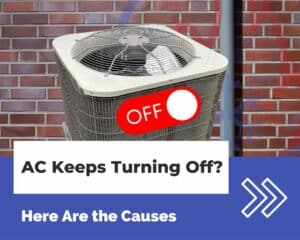
My condescending fan motor is not working, but my compressor comes on. I have replaced the fan motor and capacitor. It still doesn’t work
Hi Reginald,
Is the fan motor and capacitor getting power?
-Trey
When my compressor kicks on the fan doesn’t. When I tap the the fan shroud with may finger the fan comes on and runs fine. What’s going on?
Hi Allen,
It could most likely be the capacitor or the fan motor.
-Trey
Hi
This is helpful information, thanks for sharing. I checked the dual capacitor and it was bad (cmpr side). It was about 40mF but the cmpr seem to turn on but not the fan. I replaced it anyway and same outcome. I then checked ohms on the motor, ohm calcs seem ok, the two lessor add up to the greater. The overload switch is internal so i am waiting about 1 hours before tests.
What can i check next?
Hi Joel,
Did you check if power is getting to the fan motor? Check check if the contactor is sending power to the motor.
-Trey